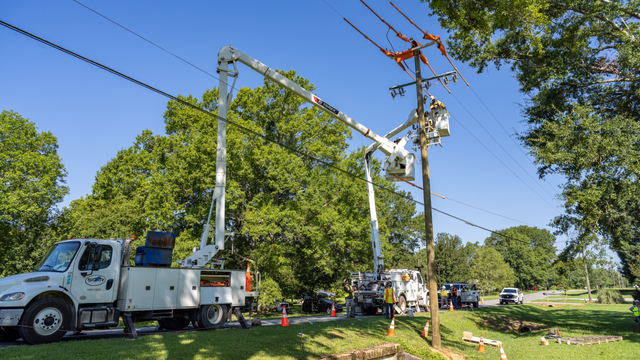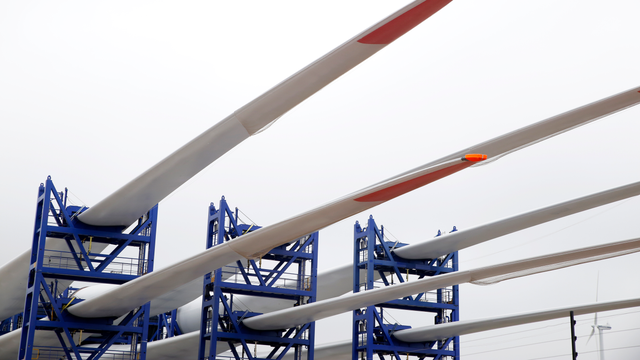By affecting the ability to undertake both planned maintenance and reactive repairs, metocean conditions, such as wave, current and wind characteristics, have a significant impact on the effective operation and maintenance (O&M) of fixed and floating offshore wind assets. Unless site-specific metocean data has been incorporated in a project’s early development, it is possible that the built assets may not be able to consistently achieve the performance forecast – because the ability of metocean conditions to hamper O&M activities has not been accounted for in sufficient detail.
Site-Specific O&M Optimisation
For example, slightly higher wind yield meant location A was chosen over location B because it offers a higher financial return. However, location A also has a more challenging metocean environment in which to operate than the more sheltered location B.
Location A’s environment makes maintenance teams’ ability to access both surface and subsea assets more difficult as fewer suitable weather windows exist and/or more expensive access and efficiency methods have to be employed. Unless this was accounted for during project development there is a risk performance forecasts will not be achieved, because equipment cannot be maintained as planned, and timely failure repairs may not be possible or be more costly.
The result is that the slightly higher financial return forecast due to location A’s higher wind yield is eroded by sub-optimal array performance stemming from an inability to ensure the required level of maintenance or significantly increased O&M costs.
Cut OPEX from the Outset
Historically, during the development of many offshore wind projects, there has been an understandable focus on identifying the location that offers optimal wind yield, and swiftly progressing design for that location, thus helping bring the project to faster financial close. As a result the project development team may not have always had the fullest dialogue with those expert in the post construction O&M element of the project, particularly with reference to the site-specific impacts of metocean conditions on O&M regimes and costs. This approach presents the possibility of ‘locking in’ substantial amounts of operational expenditure (OPEX) that could potentially be reduced with greater involvement of O&M considerations during early project development.
This is not to suggest that developers are unaware of the need to incorporate metocean data in their project planning. But the extent to which such data is accounted for from an O&M perspective, and the detail and sophistication of the data used, varies to a significant degree.
Adopting modelling capable of accurately incorporating site-specific metocean data into an assessment of the effect of O&M costs and downtime on a project’s levelised cost of energy (LCoE) will assist with the development of a more informed long-term projection of a site’s profitability, aiding in site selection, in addition to helping optimise O&M strategies for specific site conditions.
Accurate LCoE Calculation
The modelling sophistication required to accurately calculate a project’s LCoE is possible by pooling data sets not typically analysed together, and processing them using algorithms configured to inform data-driven O&M planning for site-specific conditions. Such data sets can include site-specific metocean data – e.g. wind, wave and current – analysed alongside equipment failure rates, OEM maintenance schedules and turbine power curves. The result is a greater level of O&M optimisation because of the sophistication of the site-specific, rather than generic, data being analysed. This includes the ability to schedule predictive maintenance during times of lower energy generation, thereby maximising energy-based farm availability.
This level of sophistication is important because metocean data are very complex and often highly interdependent. Minor changes in offshore asset design and location can cascade into significant effects on cost and performance, giving rise to potentially meaningful changes in a project’s bottom line. A tool which gives visibility and insights into the consequences of such changes will help enable more fully informed decisions shaping the project from the outset.
Incorporating more complete, and accurate metocean data brings a new level of sophistication to the O&M element of the development of an offshore wind project. This can help reduce the risk of performance modelling, and hence forecasts, being affected by an insufficient understanding of the ways in which metocean conditions can influence developers’ ability to ensure an array can consistently deliver the performance upon which the business case is built.
In addition, using sophisticated metocean data creates opportunities to further optimise O&M strategies and develop fuller, more accurate projections for the O&M element of a project’s costs and yield.
This aspect of project development is becoming increasingly important as arrays are located ever further offshore to harness the most powerful of winds; giving rise to the attendant risk of more challenging metocean conditions.
By Claire Cohen, Principal Marine Energy Consultant, Black & Veatch Europe





